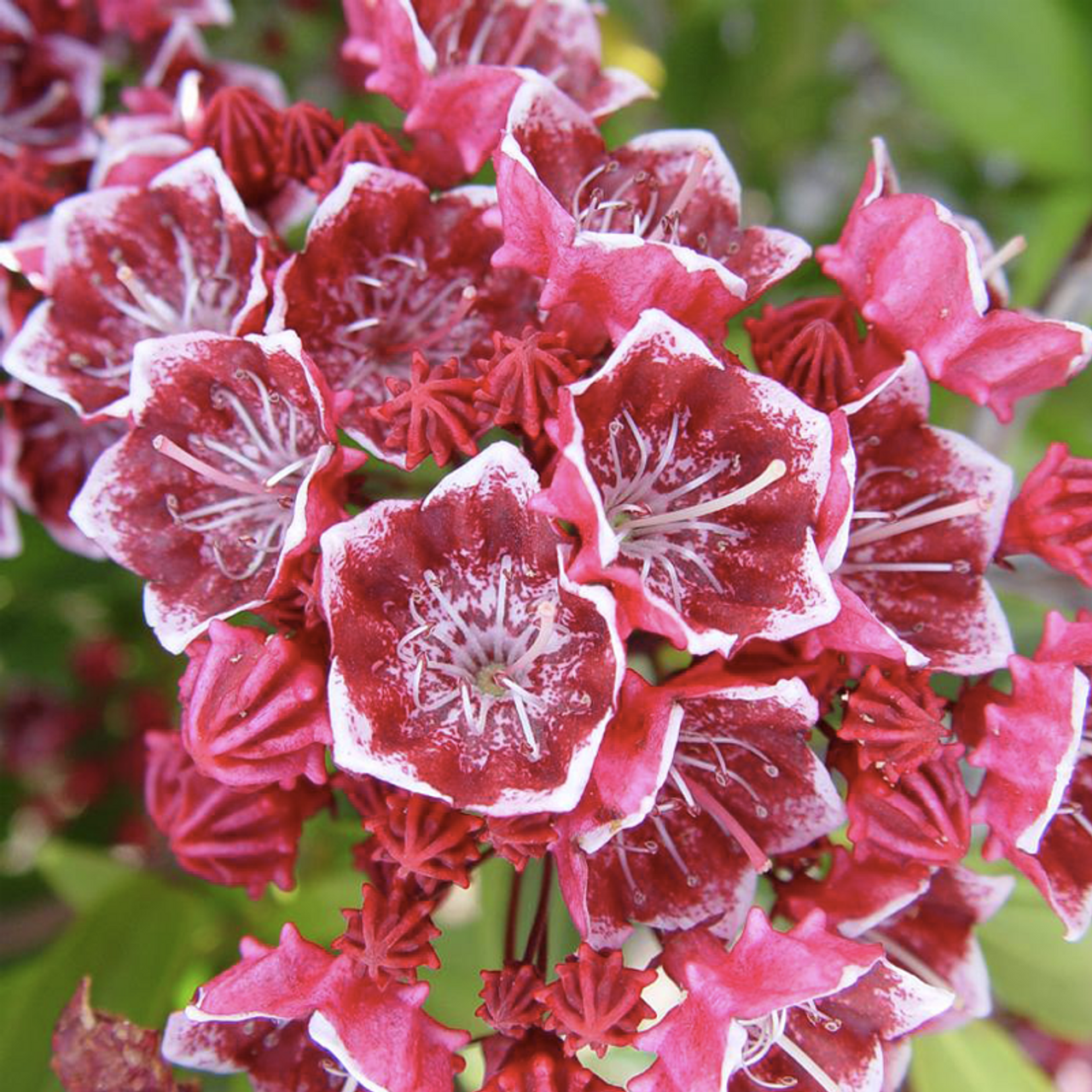
Mountain Laurel
Mountain laurel is a stunning evergreen shrub known for its glossy, dark green leaves and clusters of star-shaped flowers in shades of pink, white, and red that bloom in late spring. Ideal for woodland gardens, shaded borders, or as a foundation planting, it thrives in acidic, well-drained soils and adds year-round interest with its attractive foliage and seasonal blooms.
About Mountain Laurel

Kalmia latifolia, Lambkill, Calico Bush, Spoonwood
Eastern North America
Bushes
Glossy, leathery leaves, elliptical to lance-shaped
zones 4-9
Typically pink, white, or purple, with a pattern of darker spots or markings on the petals
Late spring to early summer
Bushy, rounded, with a dense and compact form
Bees, butterflies, and hummingbirds
Partial to full shade, poor soils, drought once established, and acidic soil
Deer, rabbits, and many common pests
How To Use Mountain Laurel In The Garden
Mountain Laurel (Kalmia latifolia) is a broadleaf evergreen shrub native to the eastern United States. It features highly ornamental blooms in late summer and can be trained into a single-stem tree. With a USDA hardiness range from zones 4 to 9, it provides four-season interest and serves as a habitat for wildlife. Note that all parts of this plant are poisonous to people and pets.
In garden design, Mountain Laurel is valued for its adaptability to part shade and understory plantings. Its size varies from 4 to 15 feet tall, making it suitable for various landscape applications, including container planting for smaller varieties. The evergreen leaves and branch structure offer year-round interest, enhancing garden aesthetics throughout the seasons.
Mountain Laurel Care
Mountain Laurel thrives in part shade with rich, humus-rich soil that retains moisture yet drains well. Maintain consistent moisture, watering once or twice a week with about 1 inch of water, preferably using drip irrigation or soaker hoses to keep foliage dry. Apply a slow-release fertilizer formulated for acid-loving plants in early spring as new growth emerges. Mulching with organic compost or finely shredded bark helps retain moisture and regulate soil temperature.
Prune Mountain Laurel after flowering to encourage bud formation for the following year and to maintain its natural shape. Remove dead, diseased, or crossing branches by cutting back to a main branch. Protect young plants from harsh winds with barriers like burlap if necessary. Compact varieties, reaching 3 to 4 feet tall, are suitable for container growth. Regularly check the pot for moisture, especially during hot periods, to prevent drying out.
Learn More About Mountain Laurel Care

Mountain Laurel Companion Plants
Companions must prosper in evenly moist, acidic soil (pH < 6), dappled to partial shade, and an understory environment with root competition. Rhododendron harmonizes with laurel’s pH needs and extends the flowering season, while pieris opens its bell‑shaped clusters weeks earlier to cue the spring display. At ground level, coral bells threads vertical stems of white blooms through the shadows, and evergreen ajuga weaves a durable, weed‑suppressing carpet that keeps the bed attractive all year.




























